Several sorts of site and climate studies are supported by this work, including sun path and wind diagrams, shadow studies, psychrometric charts, and hourly/diurnal weather data plots.

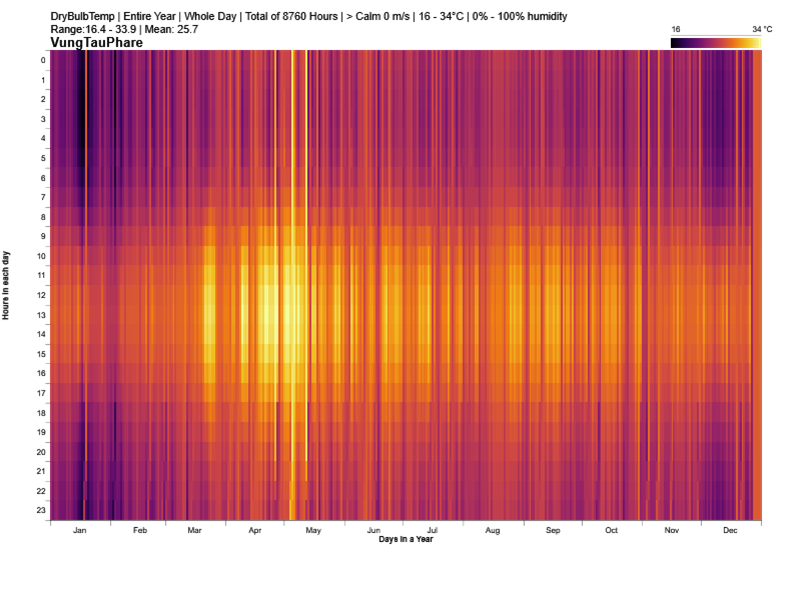
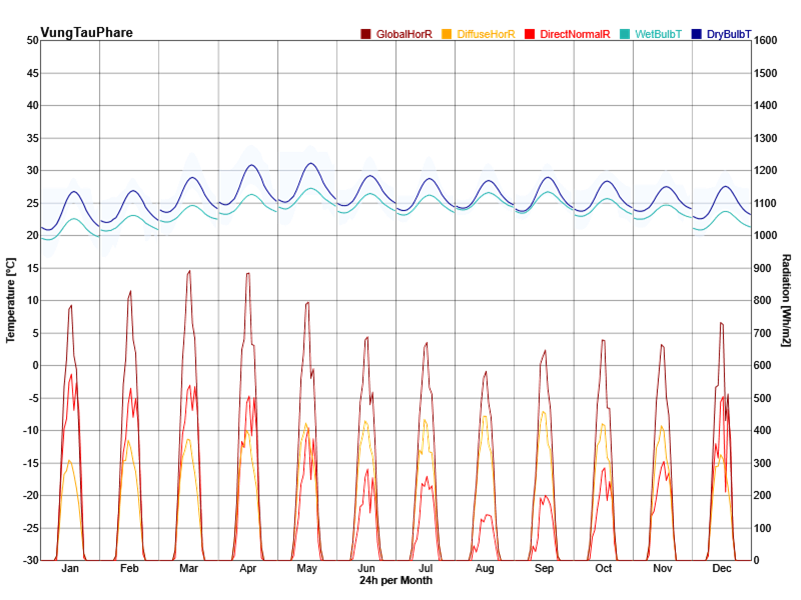
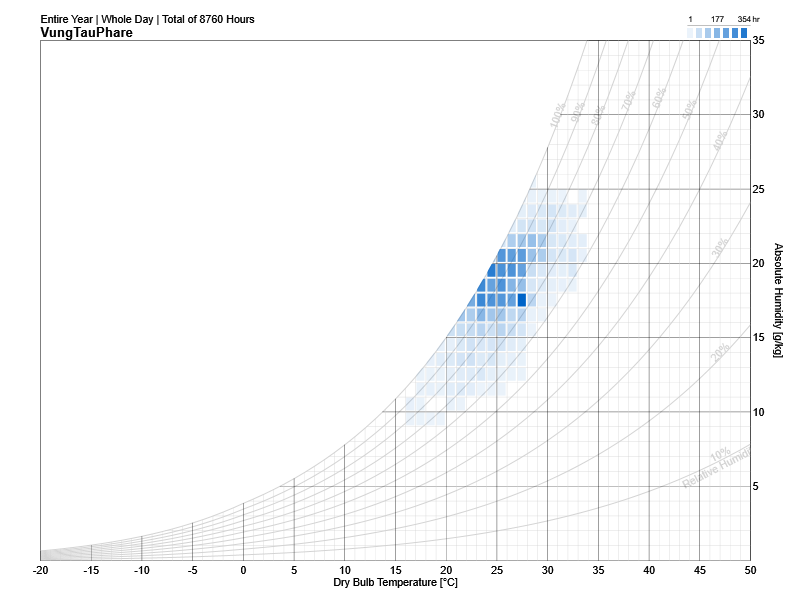
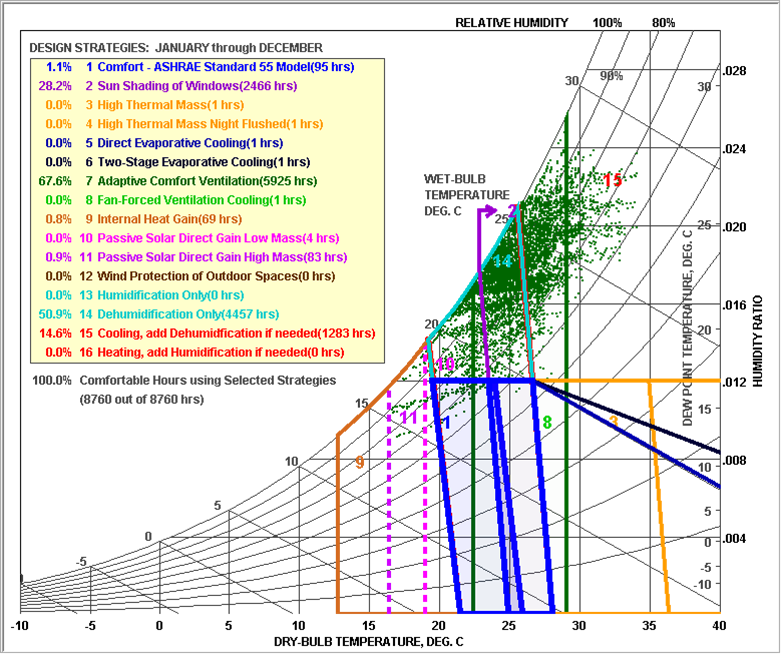
Outdoor Thermal Comfort:
Based on the meteorological information, calculate the temperature and UTCI of the building site at each specified elevation.
UTCI(Universal Thermal Climate Index) is a bioclimatic index for describing the physiological comfort of the human body under specific meteorological conditions.
For example, imagine it is 0°C outside but on a very sunny day. The real temperature is 0°C, but you may easily feel it is like 12°C under the intense sun. On the contrary, imagine now that suddenly a big, dense and dark cloud covers the sun and some intense wind starts to blow. It is still 0°C but you may feel it’s now like -10°C.

Outdoor Airflow :
The weather, as well as the nearby structures, will affect the building's wind impact. The simulation's visual representations will aid in visualizing the true wind direction and pressure acting on the structure.
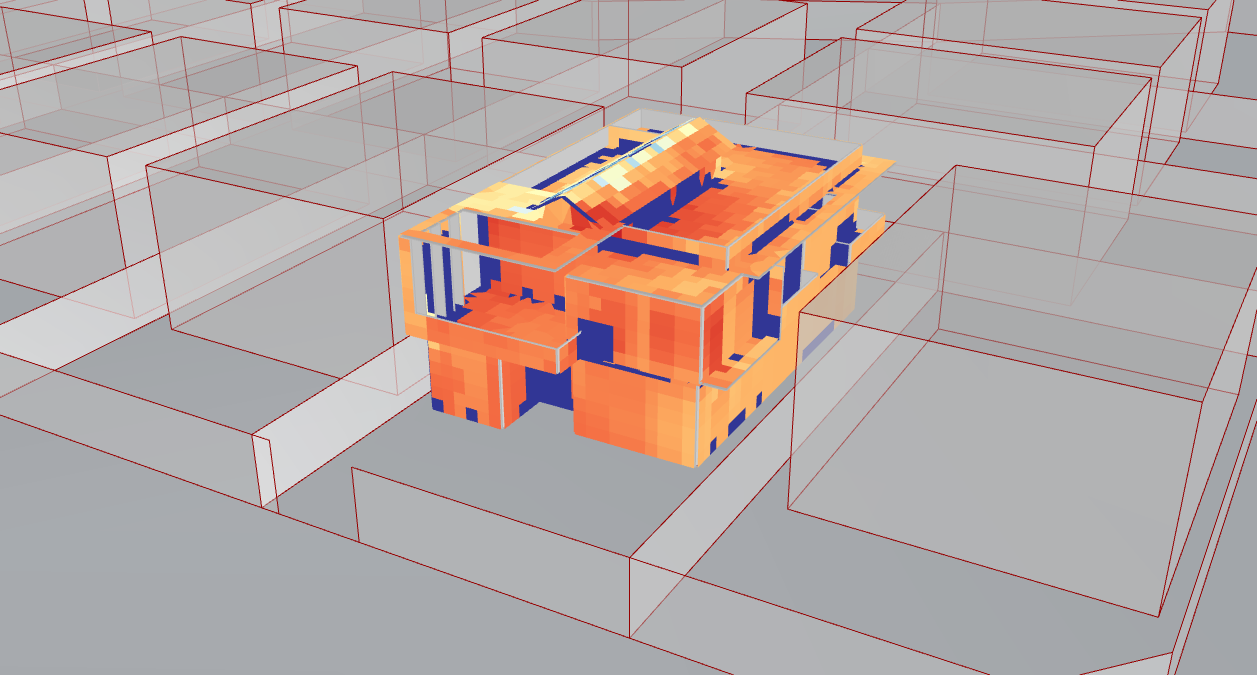

Radiation Map :
Calculation of the impact of solar radiation on the building's surface. Aids in the optimization of the building's shape and orientation, as well as the more effective placement of openings, doors, and shading objects. The efficiency of PV panels at various places is calculated.
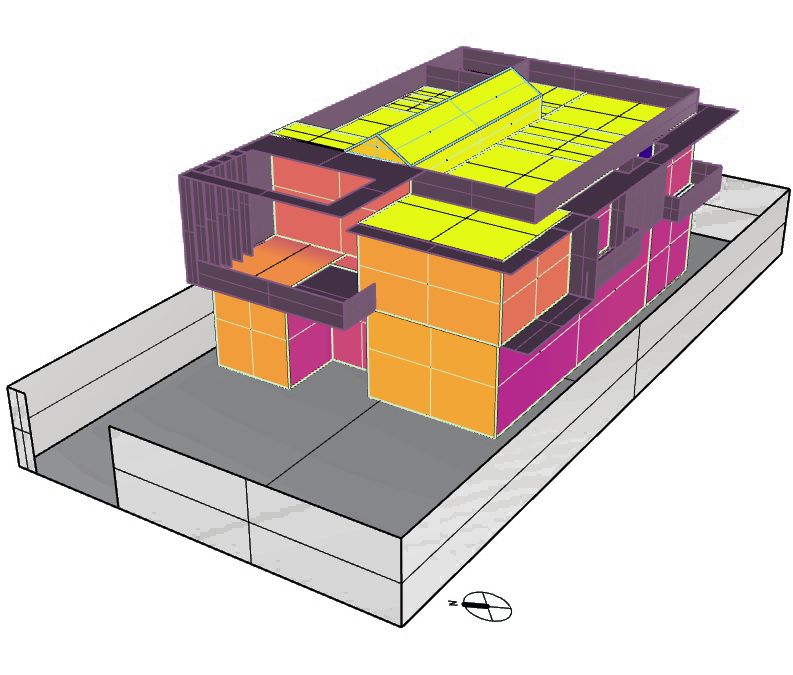
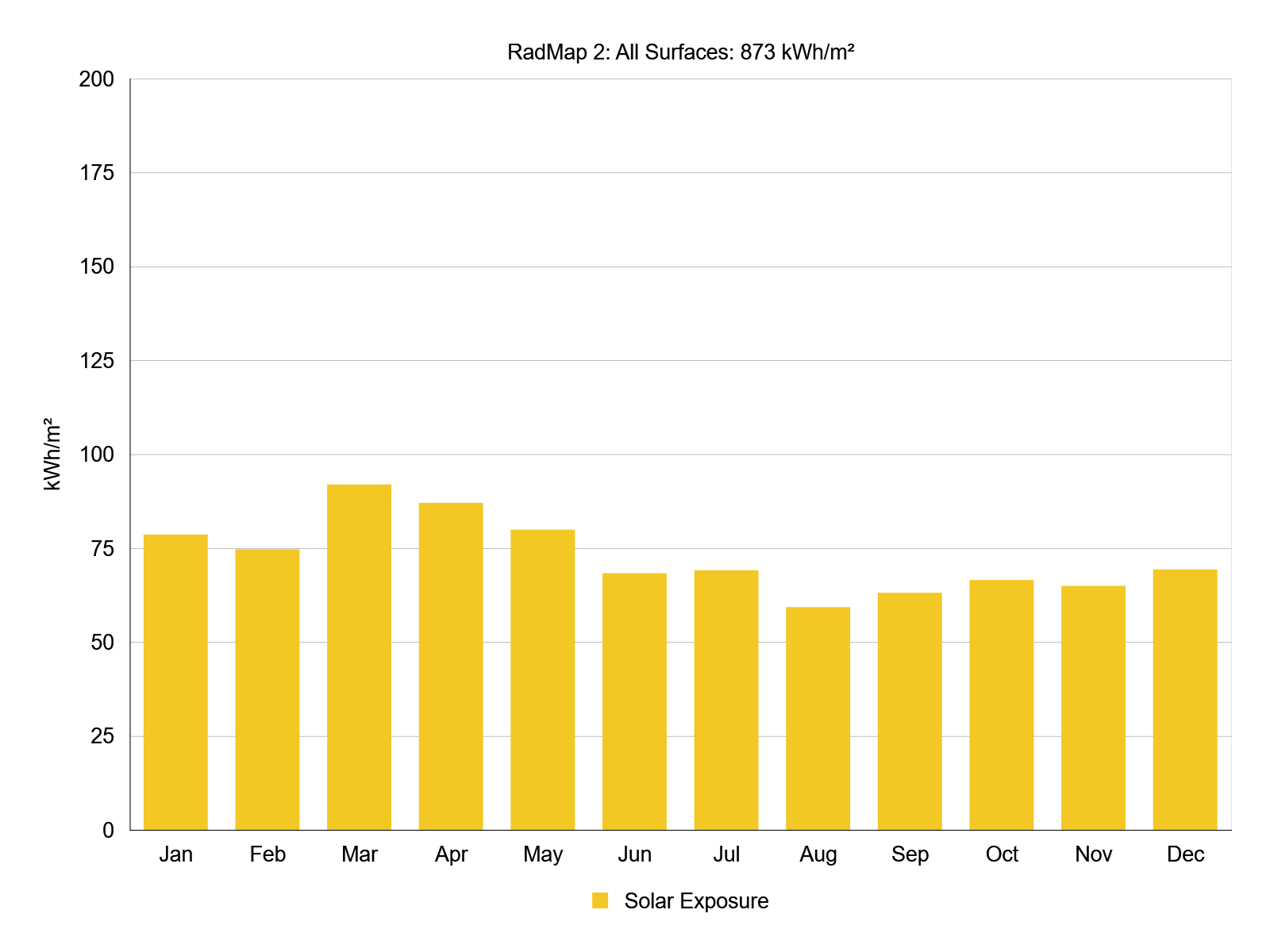
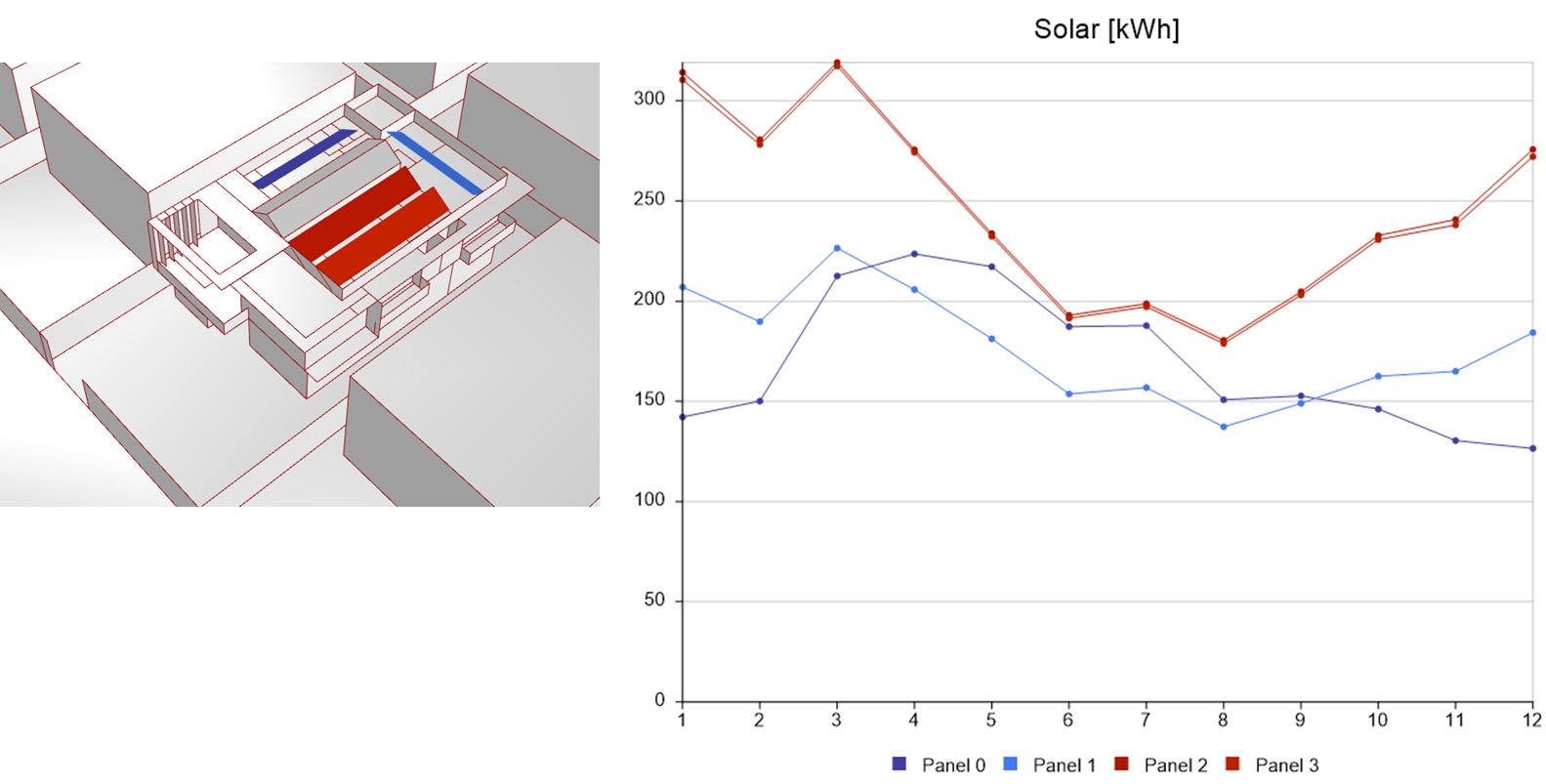
Daylight :
This work supports the calculation of a variety of daylight availability metrics and is evaluated according to LEED, BREEAM, EN, etc…
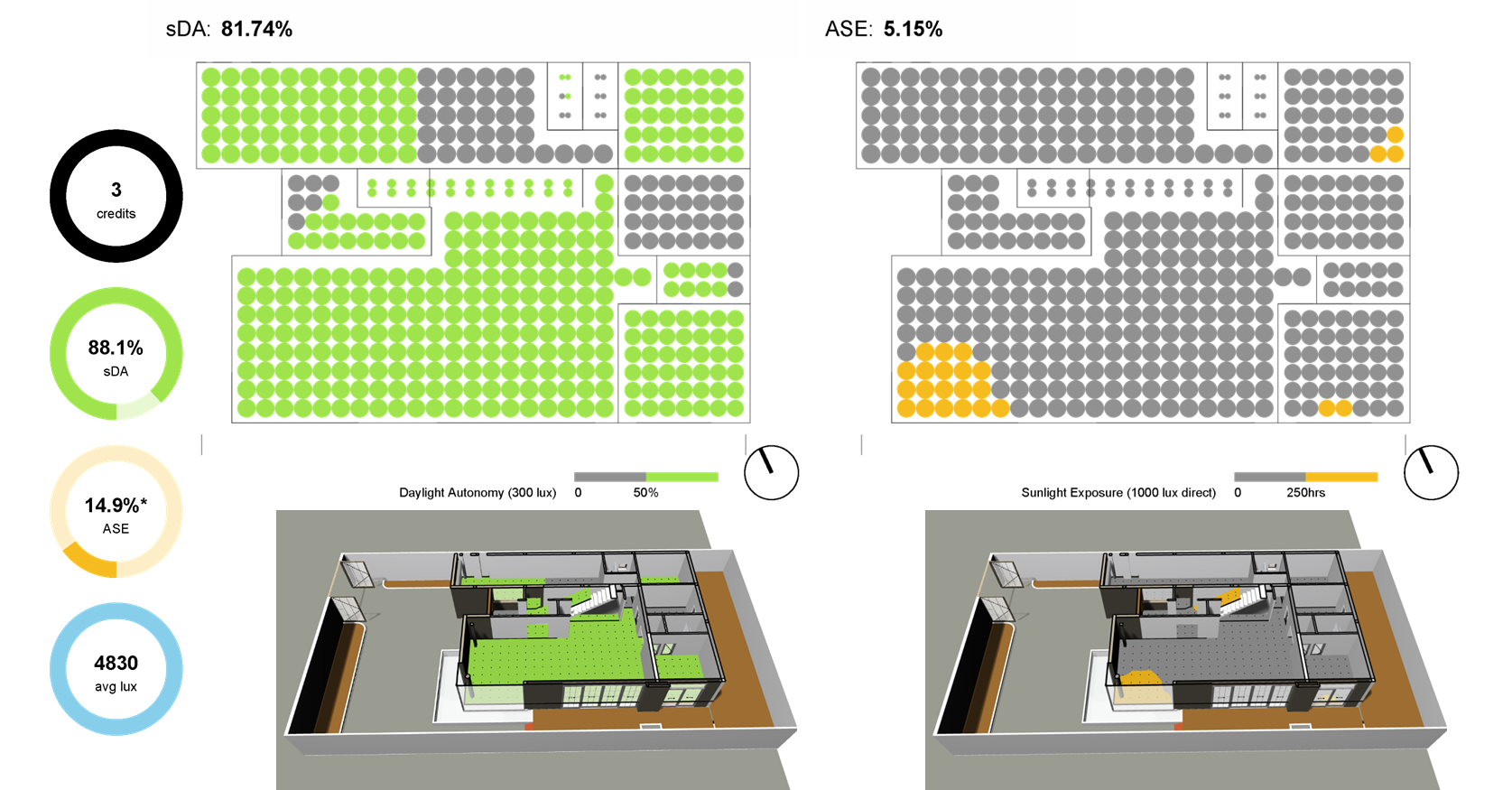
View Quality :
This work assesses occupant views and computes eligibility for the LEED v4 Quality Views credit (and the EN 17037 European standard).
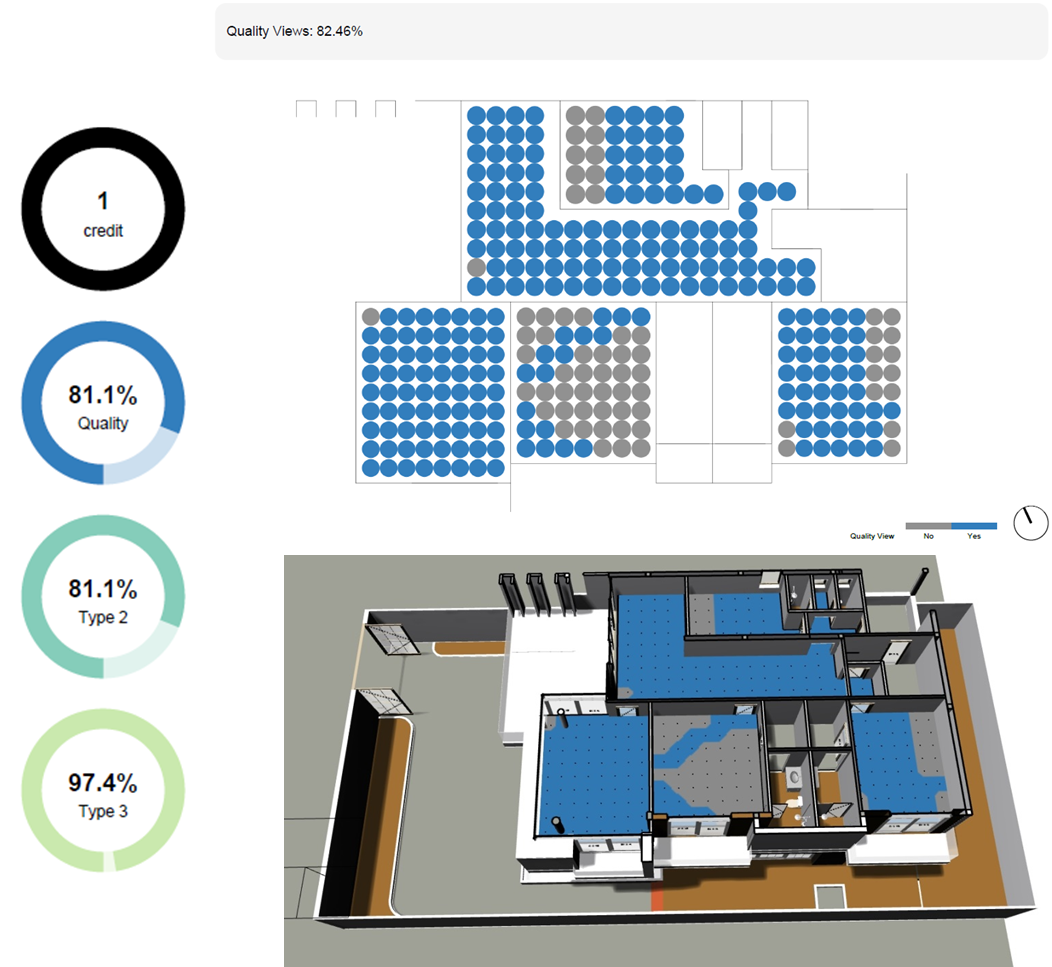
Thermal Analysis :
Airflow Network Model Uses the airflow network in EnergyPlus to calculate airflows in a naturally ventilated building. The outputs of the Energy Uses workflow will be computed for the entire building, including the site energy use intensity (EUI), annual carbon emissions, and operational energy costs.

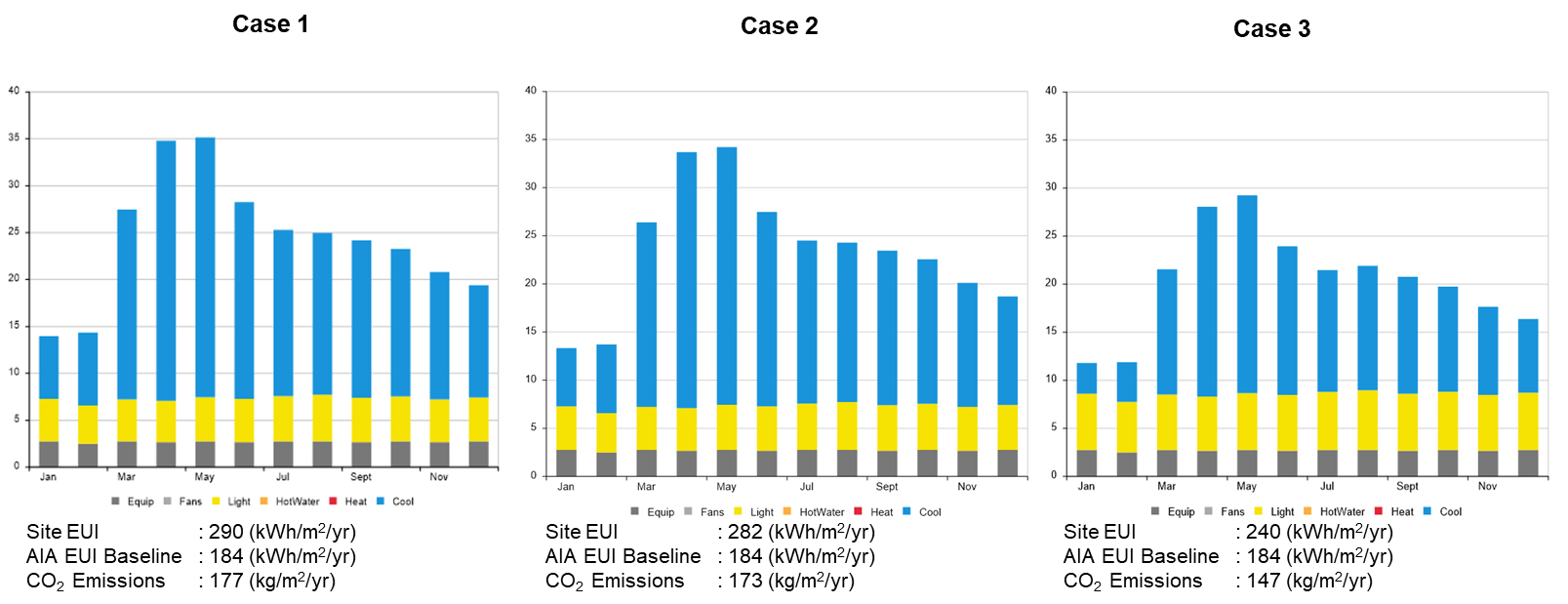

Visibility :
This workflow shows how to quantify the visual connection to the outdoors as a percent of the full 360 fields of view; aids in determining the ability to see an object or landscape outside from within the house, as well as the ability to see what is inside the house from a specific outside location.

Heating/Cooling Load :
This work calculates the heating and cooling loads for the zone.
Thermal Comfort :
This work calculates distributions of Predicted Mean Vote and Mean Radiant Temperature across the floor area.


Electric lighting :
This work calculates illuminance distributions for electric lighting.

Acoustic Simulation :
This work helps to predict noise, visualize sound propagation, and critically listen to designed spaces.


Optimizing Airflow :
Analyze airflow and optimize the ventilation system to achieve design goals (comfort temperature, flow rate, velocity, etc.)
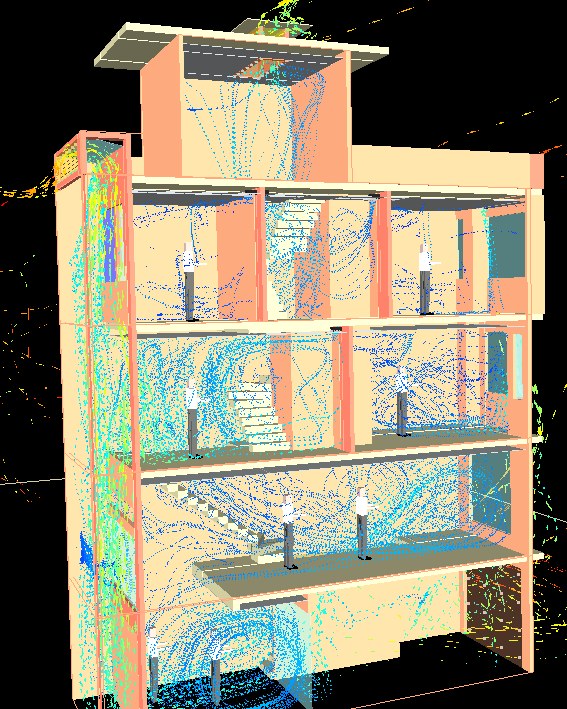 |
Velocity (m/s) |
Temperature (degC)
|
Fire & Evacuation Simulation :
Simulation of the building's evacuation capability combined with the simulation results of FDS fire and smoke control.
タグ
関連ニュース
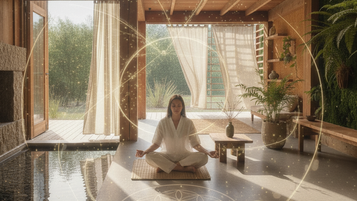
「マインドフルな家」のデザイン――物質からエネルギーへ
マインドフルな家とは、単なる住まいではなく、意識をもった空間である。そこでは、すべての線、素材、光が「気づき」と「理解」から生まれる。このデザインは流行を追うのではなく、生命の本質――物質とエネルギー、形と気、身体と心の調和――へと立ち返る。 1. 物質 ― 空間の身体 すべての家は「物質」から始まる。木、石、土、水、光、風。物質は家の「身(からだ)」であり、人が五感を通して触れる部分である。 マインドフルなデザインでは、素材は見た目や耐久性だけでなく、内に宿るエネルギーによって選ばれる。 木は温かみと香りを持ち、神経を落ち着かせる。石は大地の安定と強さを伝える。自然光は人間の体内リズムを整える「律動」である。風と湿度は呼吸であり、空間を生き生きとさせる。 静かな心で素材を扱うと、それは「魂のある物質」となり、人の延長となる。 2. 空間 ― エネルギーが呼吸する場所 マインドフルな家は、呼吸する家である。空間は空っぽではなく、微細なエネルギーの場として常に動いている。風の流れ、光の射し方、静けさ、音――すべてが住む人の感情の波長に影響する。 日本建築では、それを「間(ま)」と呼ぶ。「間」は単なる空隙ではなく、エネルギーが流れ、人が静寂の中で自らの存在を感じる場所である。 美しい家が必ずしも住みやすいとは限らない。空間に余白があり、光が柔らかく、音が穏やかで、気が自然に循環するとき――その家は初めて「生きる」。 3. 心 ― 空間を形づくる源のエネルギー...
詳細を見る
身・心・気(しん・しん・き)――癒しの建築の基盤
家は、身体の避難所であるだけでなく、心と生命エネルギーを育む空間でもある。東洋の哲学では、人間とは「身・心・気」が一体となった存在であると考えられている。この三つが調和して働くとき、人は健康で、穏やかで、明晰な状態になる。逆に、バランスが崩れると、病や不安が生まれる――それは身体の中だけでなく、住まいの中にも現れる。 1. 身 ― 物理的な空間と素材 「身」とは、目に見える要素――素材、光、音、湿度、換気、温度などを指す。「癒しの家」は、まず健康な身体のような存在でなければならない。自然に呼吸し、自然光を受け、生きた素材でつくられた家であること。天然の木、焼き土、竹、石などには、触れると感じられる自然のエネルギーが宿る。庭に開かれた窓、自然に巡る風、やわらかな光がカーテンを通して入る――それらが身体を自然のリズムに調和させ、人工的な環境による負荷を軽減する。 2. 心 ― 感情と空間の知覚 「心」とは、私たちが空間をどのように感じ取るかである。静かな構成、穏やかな光、整った比率をもつ住まいは、安心感とゆとりをもたらす。デザインが「静」に向かうとき、人は自然と内側へと戻り、本来の安らぎに気づく。静寂な空間とは、空っぽではなく、静かに息づく生命そのもの。心を落ち着かせ、呼吸を深め、感情をやわらげてくれる。 3. 気 ― 目に見えない生命の流れ 「気」とは、人と空間の間を流れるエネルギーである。光、風の向き、湿度、自然磁場、そして住む人の感情までもが関係している。「気」が流れる家は呼吸している家――風が入り、光が通り、エネルギーが滞ることなく巡る。反対に、「気」が滞ると、方位の誤りや閉鎖的な素材、散らかった空間によって、人は疲れや重さを感じ、生気を失う。しかし「気」が自由に流れるとき、家は生命エネルギーの場となり、身と心を養う。 4. 統合 ― 生きた有機体としての家...
詳細を見る
現代の家が人を疲れさせる理由
1. 自然との断絶 ― 本来の生体リズムの喪失 現代の家はしばしば密閉されています。小さな窓、遮熱ガラス、常時稼働するエアコン、そして一晩中明るいLED照明。自然光や風、温度の変化が排除されると、人間の体内時計(生体リズム)が乱れます。 私たちの体は本来、太陽と共に生きるように設計されています。 朝、自然光の青い波長がコルチゾールを分泌させ、覚醒と集中を促します。 夜、暖色の光と暗闇がメラトニンを生成し、深い眠りを導きます。 しかし現代の家では、人工照明が昼夜を支配しています。脳は「今が昼か夜か」を識別できず、不眠、倦怠感、軽い抑うつを引き起こします。 これは科学的に「概日リズムの同調障害(circadian desynchronization)」と呼ばれ、多くの都市型不調の根本原因です。 2. 感覚の過負荷 ― 「感覚汚染」 人間には五感がありますが、現代の住宅はそのすべてを過剰に刺激しています。 視覚: 強い色彩、人工照明、電子画面 聴覚: エアコン、冷蔵庫、車の騒音 嗅覚: 合成素材や塗料、プラスチックの匂い...
詳細を見る





